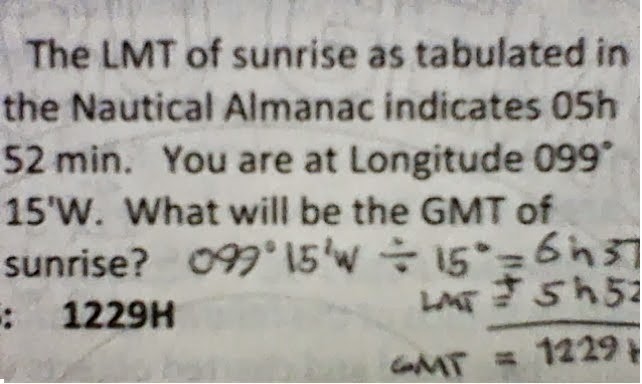While your vessel is proceeding down the channel you notice a range of lights in line with your vessel's masts. If your vessel is on course 001° per gyro compass and the charted value of the range of lights is 359° T, what is the gyro compass error?
Given:
Gyro course = 001°
True course = 359°
What is asked?
Gyro compass error
Solution:
To solve gyro error we have to subtract the gyro and true course.
PGC = 001° (add 360° to the pgc)
T/Co = - 359°
G/E = 2° W
* The gyro error is named west because PGC is greater than the true course. In case you forget how, always remember this that "Compass best, error west. Compass least, error east."
P.S. Like what you read? Please clink the share button below to share this post to your friends. Sharing is caring...
You Might Also Like
- Finding Gyro Error
- Finding Compass Error
- How To Solve Gyro Error
- Solving For Compass Deviation
- Course Made Good
- Solving For Compass Variation







